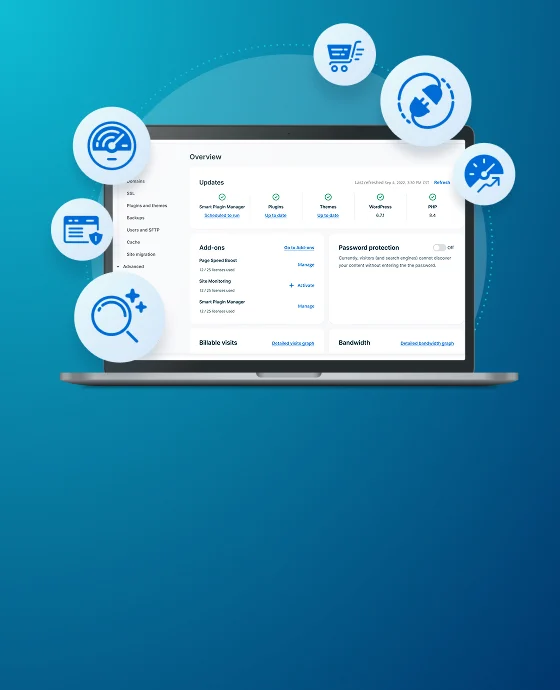
Setting Professional Boundaries with Clients
Is your client work slowly starting to take center stage on your priority list? While being career-driven is a great aspiration, feeling adequately balanced between client work and other needs like professional development, team-building, rest, and more are also important!

Maybe you’ve started noticing some workaholic tendencies in yourself like working through lunch or being the last to log off for the day to finish client tasks. You’ve done well in first acknowledging the need for change in an effort for better work/life balance. If you’re coming to the conclusion that setting client boundaries are in order — you’ve come to the right place!
Here are five tips for setting boundaries with clients:
- Evaluate what’s not working
- Be aware of scope creep
- Set schedule blocks
- Check your email only during business hours
- Schedule time for OOO
Evaluate What’s not Working
Before you can find your boundary pain points, think about what is and isn’t working for you. Maybe a client is always scheduling meetings super early in the morning or super late in the evening. Perhaps, the client expects you to always pick up the phone on the first call even when you have other projects and meetings. These are signs that the professional boundaries are blurred and it’s time for a boundary reset.

Make a list of pros and cons that you like and don’t like about your current system and how that makes you feel. You’ll only be able to fix what you first need to acknowledge!
Once brought to light, you’ll need to communicate these thoughts with your client. I recommend you adopt a clause in your contract to help host these hard conversations so both you and the client are forced to acknowledge these pain points.
Subjects like this aren’t easy but they help nurture your best professional self so you have the space and capacity to create your best work for the client!
[twitter_link]A previous boss once told me: ‘You are your biggest advocate. Don’t be afraid to speak up when you need something different.'[/twitter_link]
Be Aware of Scope Creep

Scope creep occurs when the project deliverables and results begin taking more time and resources than originally planned, budgeted, and invoiced for. Usually it’s not something big at first, but often a side request here and there. One or two requests quickly become several and then you have scope creep. By accommodating the client for each request in the name of “great customer service,” you increase their expectations while giving yourself more work than originally planned.
The first step to see if the project scope is getting out of scope, is to read the project brief and client contract. If you’re dedicating too much time or resources to one project and not getting properly compensated for it, then that’s a red flag.
Scope creep is real, so you must be on the lookout for it. Be sure you’ve clearly defined the details of the project for your client. And get your contract signed so both parties agree to the scope of the project. When requests come up that aren’t part of that original agreement, you can decide if it’s something you want to allow, or if you’ll need to charge additional for it.
Be sure to ask your client these questions before starting your next web design project!
Set Schedule Blocks
Setting schedule blocks is a great time management strategy!

To do this, you’ll schedule blocks of time throughout your day to strictly dedicate to one project at a time. This ensures you’ve got enough time set aside for every action item you want to accomplish in a day. Depending on your settings, your teammates or collaborators will be able to see when you’re free to chat versus when you’re trying to power through work.
This sets up boundaries for your schedule in case a client is consistently asking you to drop everything to fulfil their request! Another benefit to this strategy is that when you schedule your heads-down time, you’ll also have a better idea of a realistic project timeline. So if a client has been on your tail for a task, you can immediately tell them, “Yes, I’ll deliver it by X date.”
Check your Email Only During Business Hours
I am so guilty of this.
In this day and age of modern tech, you’re probably always getting notifications on your smartphone (or watch, or refrigerator, or home device) no matter what time of day it is. Maybe you feel a buzz or you see your screen light up from a distance. Instantly you’re there to check this notification — another work email. From here, it’s so easy to shift back into your work mood.

First, establish clear self-discipline boundaries with yourself to only check your email during the work hours. If you know this will already be too hard, try turning your email notifications off when you log off for the day. It might feel daunting at first but that feeling is exactly why you need this professional boundary. You shouldn’t have excessive worry before trying to check out for the evening.
Another idea is to set up automatic responses to let email senders know you’ll reply the next day. These are small and incredibly powerful steps to set expectations and boundaries.
Schedule Time for OOO
You’re probably thinking, “pfff, I already do this!”
OOO or out-of-office is the time you set up to let others know you won’t be available for a certain time. You probably already do this when your have a dentist check-up or a trip coming up, but here’s a fresh take on it!
Schedule OOO for mini moments to unwind. This can be a coffee-break walk or a power-hour yoga session over lunch. Out-of-office blocks don’t have to be entire days dedicated to errands or vacations. These breaks are important for you to recharge to make it through the rest of the work day or week.

This is me calling you — yes, you — out for not prioritizing pure vacation mode enough. Even if you’re just checking status or emails, that still constitutes as not completing checking out of your work mode. While you know to do this (probably not enough) for your holidays and appointments, try it this new way too.
Conclusion
If you ever question these boundaries, fall back to this key phrase — when in doubt, check the contract!
Any client worth working with will understand and appreciate the professional boundaries you set. If the line is getting consistently pushed, it’s time to have an open and transparent conversation with all parties.
These boundary-setting strategies safeguard you from overwork or piling your plate too high. You can love what you do in creating work for your WordPress clients while maintaining a fair work/life balance!



